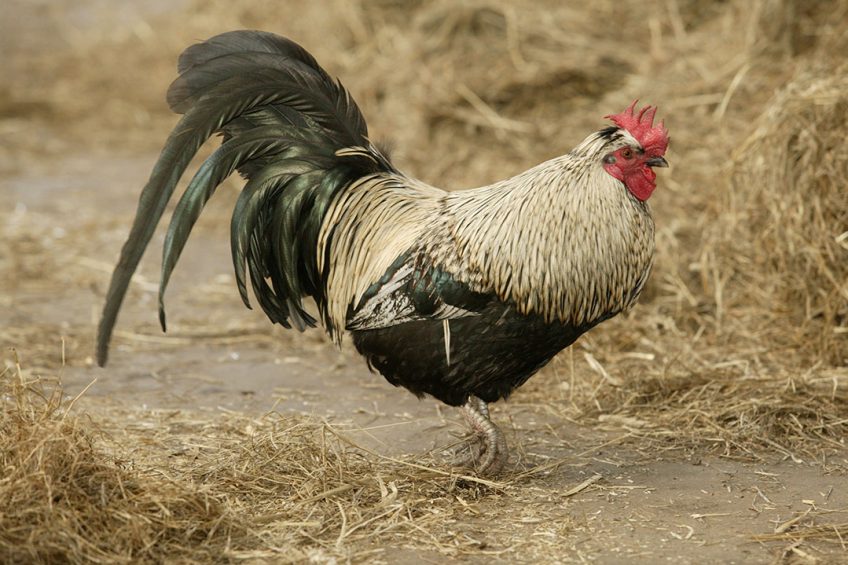Backyard producers selling affects bird flu transmission

Researchers believe small-scale poultry farmers could be increasing the risk of avian influenza transmission during outbreaks.
The researchers found that backyard producers in Vietnam tended to respond to viral outbreaks by rapidly selling their birds to avoid financial loss. As these birds mingle with others in markets and trading networks, this practice may increase the likelihood of widespread disease transmission. Lead author Alexis Delabouglise, animal health economist at CIRAD-Agricultural Research for Development, France, explained that millions of households in southeast Asia ran small-scale poultry operations, mostly with fewer than 100 birds. He said the farmers made decisions on a daily basis – often in response to economic incentives – about when and where to sell their flocks. And their decisions could influence disease spread.
“If the price of poultry goes up, farmers might expand their farming activities, which could create more outbreak risk. If there is an outbreak on a neighbouring farm, they might choose to sell their poultry early to avoid their own birds from being infected and to avoid lower prices. And if there is an outbreak on their own farm, the evidence in our study shows that they would be likely to sell their birds early to avoid both monetary loss and epidemiological risk.”
A longitudinal study of small-scale poultry farms
Working with Maciej Boni at Penn State University, USA and researchers at the Oxford University Clinical Research Unit in Ho Chi Minh City, the team conducted a longitudinal study of small-scale poultry farms in the Mekong river delta region of southern Vietnam with the aim of characterising the effects of disease outbreaks on poultry harvest rates, as well as on 2 prevention practices – vaccination and farm disinfection. The team followed 53 farmers and their management of more than 1,000 poultry flocks for 2 years (2015-2017).
Delabouglise said that the team found that farmers did send their chickens to market early when there were outbreaks occurring on their farms: “Specifically, small-scale farmers increased their harvest of broiler chickens by 56% during outbreaks with no sudden deaths and by 241% during outbreaks with sudden deaths. This has the potential to exacerbate and spread the virus even further,” he added.
The team noted that sudden deaths – the deaths of chickens less than 1 day after the onset of clinical symptoms – are considered to be indicative of HPAI infection. Interestingly, they found that the probability of disinfection was not affected by the occurrence of the outbreaks. Finally, the team discovered that the likelihood of vaccination against avian influenza strongly increased with flock size. The probability of vaccination was almost 0 for flocks of 16 birds or fewer and nearly 100% for flocks of more than 200 birds. 2 reasons for smaller producers not vaccinating could be their desire to avoid transactional costs associated with declaring flocks to government vets or simply due to the small number of birds involved, said Delabouglise.
 US backyard flocks: Salmonella infection rates cause concern
US backyard flocks: Salmonella infection rates cause concern
Concerns about the increase in people infected by strains of Salmonella linked to contact with poultry in backyard flocks in the US has prompted advice from veterinary experts.
“Crucially, it is these smaller flocks that are more likely to be sold into trading networks during outbreaks. The rapid sale of sick birds can contaminate other birds at traders’ storage places and those at live bird markets. It also exposes consumers and traders, slaughterhouses and retailers to an increased risk of infection.” Delabouglise noted that, on the flip side, a massive arrival of underage birds in a live bird market, or a price decrease due to the temporary oversupply of poultry, may be a sign for government agencies that an outbreak is occurring: “This is an interesting area for surveillance of livestock diseases,” he added.
Active role for small-scale poultry farmers
Small-scale farmers could play an active role in the control of emerging infectious diseases if they are given the opportunity to depopulate their farm upon disease detection without disseminating pathogens in trade circuits. Policymakers could encourage the establishment of formal trade agreements that encourage such virtuous management of disease outbreaks in poultry.
 USDA: Avian leukosis now a “trimmable condition”
USDA: Avian leukosis now a “trimmable condition”
In the future, poultry carcasses affected with one or more of the several forms of avian leukosis complex will no longer be condemned.
One way forward could be for farmers to sell their sick birds as feed for pythons and crocodiles raised on neighbouring farms. Another could be to set up deals with larger commercial farms who can give them financial indemnities to destroy the birds as a way of protecting their own flocks. “It would be impossible to have reliable public-health control over the million of small-scale poultry flocks in a place like Vietnam, but providing economic incentives to responsibly manage birds during disease outbreaks is feasible,” he concluded. The research, which was also supported by the Wellcome Trust and the Defence Threats Reduction Agency, was published in eLife at the end of August.
At least 8 countries have temporarily banned the import of poultry products from Victoria, Australia, as the state’s outbreak of bird flu continues. To date, about 400,000 farmed birds have been slaughtered.













